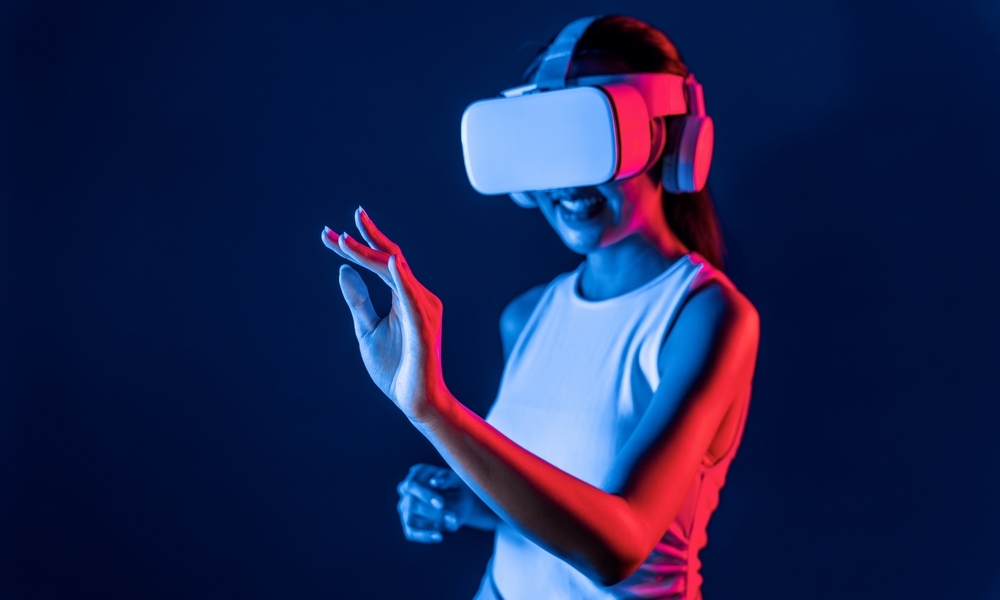
Digital, Metaverse and blockchain for a limitless fashion experience
Article by Samuele Ghilardi

What could be more concrete than a fabric, born and designed to have a texture and give a feeling to the touch? Even the most abstract digital developments have not remained insensitive to the world of textiles and fashion in general.
These sectors represent a new challenge and a new frontier for those who want to market themselves by exploiting the tools of augmented or fully immersive reality of the Metaverse.
A pioneering example in the use of virtual reality is that of Prada, which in 2020 produced a series of immersive videos for its collections, usable through common commercial visors and available on the most popular platforms.
If we take even a superficial glance we will immediately discover that the scenario is rich in experience and equally articulated in terms of realizations. We start from the simplest situation when a brand wants to have a presence also in the digital world, not content with a website or a presence on social networks, but wants to create a showcase or an entire showroom that can be visited in the Metaverse.
This type of activity implies that a visitor wears a dedicated visor to access a completely digital space in which to discover fabrics, clothing and experiences related to a brand. The visit can take place in person or by using an avatar, i.e. a digital surrogate of the visitor who will be the projection of the same in the virtual space, this avatar will also be able to wear and thus purchase the clothes.
The Metaverse communities are made up of real people interacting through their digital alter-egos, but as in reality, they want to communicate and be recognized through their own style, so they need to find someone in these parallel worlds who will realize the possibility of wearing a precious garment or an eclectic accessory.
Today, there are several systems that implement as many different ‘meta-verses’ and are visited by millions of visitors from all over the world. The most frequent visitors take care of their avatar as if they were taking care of themselves, and so it is customary for them to personalize it both in form and appearance, including the look.
Several brands such as Balenciaga, Louis Vuitton or Zara have brought their products into the digital world to be worn by non-physical characters, just as many brands were born and exist only in the Metaverse. Gucci has made and sold bags for the digital mode as if it were the physical one.
This phenomenon has brought with it a technological and professional spin-off that has given rise to new figures such as digital stylists, or digital fashion designers, as well as new specialists for these new markets. A specific target is video games where customization or the addition of accessories to one’s characters reaches maniacal levels of both realism and originality.
It would be a mistake to think of it as a marginal phenomenon, according to reports by Statista, it is a market that will be worth as much as $74.4 billion in 2024, with an average expenditure of between $65 and $122 per user, in various product sectors. The same statistical projections predict a user base for the digital accessories market of around 49 million in 2030.
And as for every phenomenon born in the fashion world, digital also has its fashion week, the next edition of which will be held in February 2025 in Paris and New York, with ‘digital’ and immersive fashion shows.
Having a shop, or better to call it a point of presence, in the Metaverse also means providing a space for socializing and building events in the digital world.
The DressX shop exists only in the digital world, but its collections are available in the real world through collaboration with brands and magazines. This phenomenon does not only create a market for ‘virtual’ products, but triggers a development of new designs that can be brought back into the real world and an advanced technological development.
Moreover, the use of crypto currencies and blockchain, the technology that makes these digital transactions possible, can bring the same community dynamics back to the real world through mechanisms supported by NFTs. These special tokens, not fungible tokens, actually provide the holder with a title and qualification of membership that can make him or her both a collector but also a privileged consumer in the real world.
Moreover, since NFTs are, by definition, limited in number, they encourage collecting and their use as a substitute for investment. Owning an NFT of a certain brand generally guarantees the possibility of participating in exclusive events or promotions.
The more exclusive these events are, the more unrestrained the hunt for NFTs becomes. To give you a number, Nike has turnover of $185 million in NFTs between 2021 and 2023.
In the logic of social media, where one’s image and style can last the time of a photograph, it is more important to show off an outfit than to own it, so why not buy and wear an elaborate digital one?
Today’s technologies, thanks to the computing power made available by the cloud, can exploit three-dimensional modelling, as well as immersive reality, to realistically model a human body and make it wear clothes and textiles without it having to leave the house.
The buyer can access the well-known web commerce channels with the advantage of being able to try on the garment before purchase and thus opening the door to an infinite potential for customization, just in time.
In the real world, every brand should have enlisted an army of designers and tailors to do what is possible in the digital world with much less investment. The savings in terms of inventory, time and waste are considerable.
On a line of the Tokyo railway, visitors can visit a uniquely existing station in the Metaverse, called Shin Akihabara Station, where it is possible to interact and shop: the products purchased will be available for pick-up via physical lockers in the real Akihabara station.
We are only at the beginning of a radical change in the way fashion and design distribution channels are conceived.
The future will see this new marketplace joining the traditional one, as our presence in the digital world becomes more and more every day.
Perhaps a day will come when our avatar will wear a dress suggested by an artificial intelligence, made by a designer in a remote part of the world, and delivered to our homes for the physical way. We like to imagine that this dress will have a label, perhaps a hologram, saying ‘Made in Italy’.

